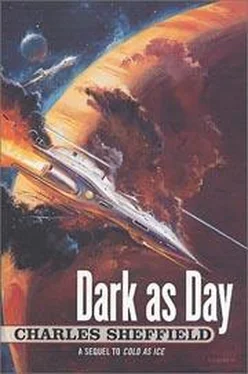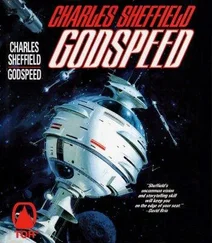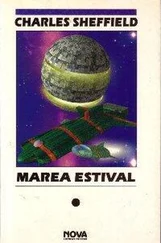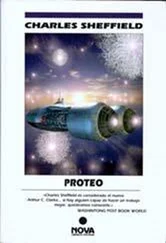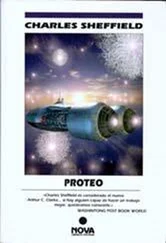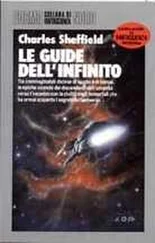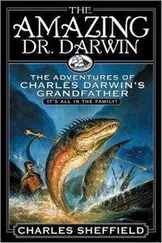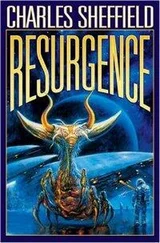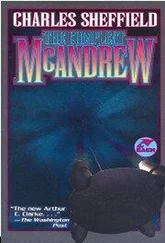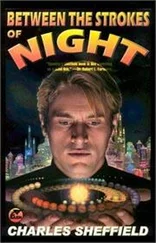“Before I could relax, however, Bengt Suomi sent me the results of a later test, one which at first baffled both him and me. He is going to repeat that test now, for my benefit and yours, in a form where it is much easier to see what is happening. Dr. Suomi, if you would be so kind?”
“Indeed. Observe closely.” Suomi stepped forward and held up what appeared to be an empty glass cylinder with a metal plug at its upper end. He turned the big cylinder, half a meter long and almost as wide, with a showman’s flourish that did not at all match his mournful appearance. His arm was long and skinny, and Milly found herself thinking, As you can see, I have nothing up my sleeves. She tried to suppress the image. This was a life-and-death matter, no cause for joking.
“You will notice,” Suomi continued, “that the cylinder appears to be lacking in contents. That is, however, not the case. The cylinder contains two things: hydrogen, at low pressure. And, at the bottom of the cylinder, approximately a hundred small spherical nodules taken from the body of Sebastian Birch.”
“What! Let me look.” Valnia Bloom strode forward and tried to grab the cylinder from Suomi’s hands.
“Dr. Bloom, they are too small to see with the naked eye.”
“I know that, better than you — I’ve been working with Sebastian Birch for months. What I want to know is, where the hell did you get those samples?”
Bengt Suomi looked at Bat. Bat turned to Alex Ligon. Alex Ligon said — looking, Milly decided, about as guilty as a human being could look — “I’m not sure, but I think they came from a medical test lab in Earth orbit.”
“Did they now? Well, I suppose that’s remotely possible.” Valnia Bloom handed the cylinder back to Bengt Suomi. “I’ll have a few words with Christa Matloff about this.”
Alex Ligon did his best to fade into the background, as Suomi went on, “Here we have a perfectly stable situation. Hydrogen, and nodules composed of some inorganic materials, co-existing without undergoing any form of reaction.” He stepped over to the workbench. “Now I place the cylinder on the fixed stand, and allow the piston freedom to move.”
The bottom of the cylinder fitted neatly into a silver ring. The metal insert at its upper end mated exactly with a round-ended arm that protruded down from a bulky silver ovoid.
“I can control the movement of the piston up or down with this wheel, decreasing or increasing the pressure within the cylinder. The pressure itself is shown on the gauge. Note that the value holds steady, and we presently have much less than a kilogram per square centimeter. In fact, it is necessary to apply upward force to hold the piston in position. Now I propose to lower the piston. Keep your eyes on the pressure gauge.”
Suomi moved to the wheel at the side of the instrument and began to turn it. The piston visibly, and slowly, descended. The reading on the pressure gauge, just as slowly, increased.
Milly thought to herself, Well, big deal. Pressure inversely proportional to volume. It’s behaving just the way that a perfect gas is supposed to behave. I hurried all the way over here, sweaty and smelly, to watch a demonstration of Boyle’s Law?
The descent of the piston continued. The pressure within the cylinder went up in exact reciprocal proportion. It had reached a few kilograms per square centimeter, and Milly was ready to conclude that Bengt Suomi and the Great Bat were both nuts, when an abrupt change occurred.
The value shown on the pressure gauge dropped to zero. At the same time the piston moved swiftly downward until the free space at the bottom of cylinder had vanished completely.
“A visible anomaly, a definite anomaly,” said Bengt Suomi. “The volume drops to a vanishingly small value, but so does the pressure. What has happened to our perfect gas, with its pressure inversely proportional to volume?”
He paused. Milly decided that Suomi didn’t just sound like a showman, he was one. He was making a meal of this.
She said, “It’s very obvious. There’s been a phase change in the hydrogen. Gas to liquid, or to solid. The pressure/volume relation doesn’t apply anymore. You have a tiny volume of material, and no pressure.”
She knew she’d hit it right, because Suomi said glumly, “That is a correct conclusion. There has indeed been a phase transition. The contents of the cylinder have gone from the usual form of gaseous hydrogen to a far denser form. The phase change takes place through the whole body of the gas almost instantaneously, with the nodules apparently serving as a catalytic agent for the condensation. This is what our experiments revealed. But what was the significance of this? I could see no relationship to any ‘doomsday device,’ or a weapon of any kind. Nor could my staff. The subtle mind of Rustum Battachariya was needed to unravel the mystery.”
He bowed to Bat, who said, “I formed a clear mental picture, but I didn’t know how to calculate consequences. Sebastian Birch had an unnatural obsession with the clouds of Jupiter and Saturn. I asked myself what would happen if nodules like those in Sebastian Birch’s body were released into the upper atmosphere of a gas-giant planet. At first, there would be no interaction. As we saw, the nodules have no effect on low pressure hydrogen. But the nodules themselves are dense. They would fall rapidly through the planetary outer layers, to regions where the pressure was higher. And now there would be immediate and drastic consequences. The phase change that we saw would take place and spread with great speed through the whole atmosphere. The new phase of hydrogen occupies far less volume. Jupiter would collapse, catastrophically, to become a denser sphere only a small fraction of its current size.
“After that phase change we would have a smaller Jupiter. However, the planet’s mass would remain the same, therefore its gravitational influence would not change. Ganymede, Europa, and the other moons would continue in their present orbits, unaffected. So what would happen? Nothing? I tried to imagine myself within the dark mind of Nadeen Selassie, and I was somehow sure there would be consequences — terrible ones. What might they be? I could not say. At that point, I again needed expert assistance.”
Bat raised his eyebrows at Bengt Suomi. Milly reached another conclusion. She would never have dreamed it of Bat, but somewhere deep inside the man was as big a ham as Bengt Suomi — and they were both loving it. They knew they had their audience hooked.
Bengt Suomi’s next sentence confirmed it. He said, “Let us dip into the past. Sometimes old theories have their uses. During the nineteenth century, the age of the Sun was much in dispute. Biologists and geologists needed many tens of millions of years for natural processes to have the necessary effect. Physicists, on the other hand, could imagine nothing that would offer the Sun so long a lifetime. Finally, Kelvin and Helmholtz came up with a proposal. It was wrong, as it happened, but it made sense. They suggested that the Sun remained hot because it was gradually shrinking in size. During that slow collapse, gravitational potential energy was converted into heat energy. There would be enough energy to keep the Sun hot and shining for many millions of years. The same thing happens when a star suddenly collapses. A vast amount of energy is released, enough to blow the outer layers of the star far way into space.
“Now consider our situation. If all the hydrogen on Jupiter underwent a sudden phase change to a denser form, the planet would shrink to a thousandth of its present size. There would be a gigantic release of gravitational potential energy. We would see Jupiter collapse, but at the same time flare bright enough to make the Sun appear dim. Actually, we would see only the first millisecond of that change, because Ganymede and all the other moons would instantly become charred cinders. That was Nadeen Selassie’s ultimate weapon; a weapon not based on fission or fusion, but on the release of planetary gravitational energy. The collapse would not be stable — at those induced temperatures, the phase change would rapidly reverse. But it would come too late to save anything from here to the Oort Cloud.”
Читать дальше
